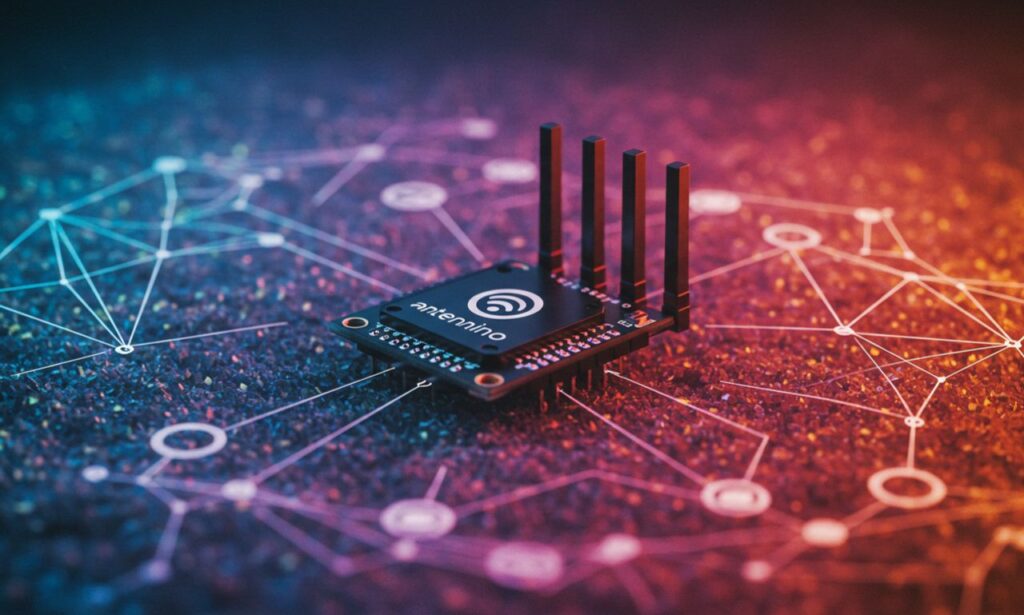In the fast-growing world of IoT, Antennino stands out as a flexible, compact, and open-source hardware platform for wireless sensor applications. Designed for hobbyists, researchers, and educators, Antennino simplifies the development of sensor-based projects by providing a modular, Arduino-compatible board optimized for LoRa communication. This article explores the capabilities, architecture, applications, and benefits of Antennino, and why it is gaining traction in the open hardware community.
What is Antennino?
Antennino is a small, wireless, open-source IoT board developed for applications that require long-range, low-power communication. It’s equipped with an ATmega328P microcontroller and communicates using a LoRa (Long Range) transceiver module, enabling it to send data across kilometers without relying on cellular or Wi-Fi networks. The board supports multiple sensors and is programmable via the Arduino IDE, making it ideal for rapid prototyping and educational use.
The name “Antennino” is a blend of “antenna” and “Arduino,” reflecting its wireless and Arduino-compatible nature. With its low energy consumption, robust construction, and community-driven development, Antennino is an excellent choice for both beginners and experts in IoT.
Antennino Hardware Overview
The core of the Antennino platform consists of the following key components:
-
ATmega328P Microcontroller: The same chip found on Arduino Uno boards, providing 32 KB of flash memory and 2 KB of SRAM.
-
LoRa Transceiver: Usually the RFM95 or SX1276 module, enabling long-range wireless communication in the 868/915 MHz bands.
-
Power Supply Management: Operates on AA batteries, making it ideal for remote deployments.
-
I2C and Analog Sensor Ports: Allows users to easily integrate temperature, humidity, pressure, motion, and gas sensors.
The board includes jumpers and headers to switch between power modes, connect various shields, and adapt to custom enclosures. Its modular approach promotes user customization without the need for soldering.
Setting Up Antennino
Setting up Antennino is straightforward and beginner-friendly. Follow these basic steps to get started:
-
Download the Antennino libraries from GitHub or the official repository.
-
Install the Arduino IDE, then include the necessary board files and libraries.
-
Connect the Antennino board to your computer via a USB-to-serial converter.
-
Upload your sketch, integrating sensors as needed.
-
Deploy the node and start logging sensor data remotely.
The platform’s open-source nature ensures that all setup guides, schematics, and code examples are freely available. This reduces barriers for non-experts to start building functional IoT systems.
Antennino Communication: LoRa at its Core
The use of LoRa technology is one of Antennino’s standout features. LoRa allows communication over several kilometers, even in rural or obstructed environments, using minimal power. This makes it ideal for:
-
Environmental monitoring in agriculture
-
Smart city infrastructure
-
Remote industrial sensor networks
-
Wildlife tracking and ecological studies
Unlike Wi-Fi or Bluetooth, LoRa does not require proximity to a network. This means Antennino devices can be deployed in isolated locations, collecting and transmitting data to a centralized receiver or gateway.
Use Cases and Applications
Antennino is versatile and finds use across a wide range of industries and personal projects. Here are some real-world scenarios where it excels:
1. Agricultural Sensing
Antennino nodes can monitor soil moisture, ambient temperature, humidity, and light levels. Farmers can use this data to optimize irrigation and crop care remotely.
2. Smart Homes
With motion detectors, gas sensors, or door sensors, Antennino boards can help monitor home security or automate lighting and heating systems.
3. Industrial IoT
The platform can be deployed in factories to monitor temperature, air quality, and machinery performance without requiring constant human oversight.
4. Educational Projects
Antennino is ideal for STEM education due to its simplicity, documentation, and compatibility with Arduino. Students can build hands-on IoT projects without advanced coding knowledge.
Advantages of Using Antennino
What makes Antennino a preferred platform in the DIY and professional IoT space? Here are its major advantages:
-
Low Power Consumption: Ideal for long-term, battery-powered deployments.
-
Open Source: Full schematics, PCB designs, and software are openly shared with the community.
-
Cost Effective: Much cheaper than commercial IoT platforms with similar features.
-
Modular and Scalable: Add sensors, actuators, or shields as needed.
-
Community Support: A growing base of users, tutorials, and forums.
Additionally, the board’s compact design allows it to be embedded in tight spaces—perfect for discreet installations.
Programming and Development
Programming Antennino is no different from programming an Arduino. Users can access dozens of community-created libraries to interface with sensors or use communication protocols like I2C, SPI, or UART. Common development tools include:
-
Arduino IDE
-
PlatformIO
-
Custom firmware flashing tools for LoRa
Because it is based on the ATmega328P, any code compatible with Arduino Uno will typically work with Antennino after minor modifications.
Best Practices for Deployment
To get the most from your Antennino setup:
-
Use energy-efficient sensors to extend battery life.
-
Apply sleep modes to reduce power draw when the device is idle.
-
Place the board in waterproof enclosures for outdoor projects.
-
Test your LoRa range before final deployment to ensure reliable communication.
Following these best practices will ensure your Antennino nodes perform reliably even in harsh environments.
Future of Antennino
As more users adopt the platform, the Antennino ecosystem continues to evolve. Future developments include:
-
Integration with MQTT brokers and cloud dashboards
-
Native support for NB-IoT and LoRaWAN gateways
-
Improved firmware for OTA (Over-the-Air) updates
-
Enhanced mobile apps for sensor data visualization
With continued community contributions and interest from educational institutions, An-tennino is poised to become a cornerstone of open-source IoT innovation.
Conclusion
Antennino brings together the best of open-source design, low-power operation, and long-range communication. It fills a unique gap in the market by offering a fully customizable IoT board that balances simplicity and power. Whether you’re deploying a smart farm solution, building a DIY home automation system, or educating the next generation of tech enthusiasts, An-tennino provides the tools needed to bring your ideas to life.







